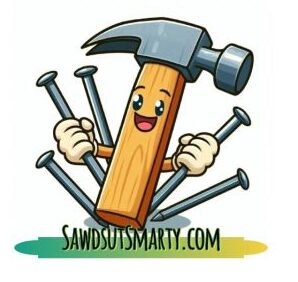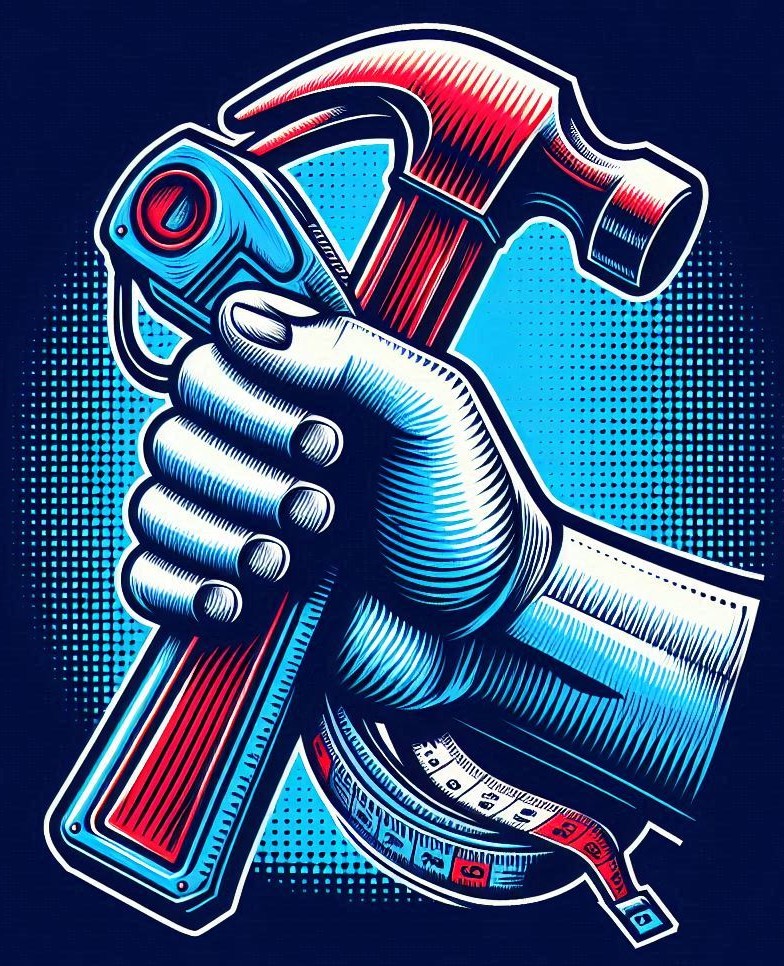Starting your first DIY wood projects for beginners step by step can feel a little overwhelming, like getting lost in a maze of tools and techniques. But here’s the good news: it doesn’t have to be complicated. By beginning with simple projects, learning the basics of wood types, and getting comfortable with essential tools, you’ll gain confidence while creating something you can be proud of.
If you are new to the world of wood projects for beginners, allow me (Wayne) to say welcome…
Before you even think about picking up that saw, let’s talk safety. Keeping your workspace organized, knowing your tools, and understanding basic safety measures can prevent accidents. Trust me, safety goggles and gloves are your best friends in the workshop.
So why take up woodworking? Aside from crafting some cool wooden items, it’s a fantastic way to de-stress and refine skills like problem-solving and creativity. Plus, the satisfaction of building something with your own hands? Priceless.
It’s easy to fall into the trap of thinking you need all the high-end tools to get started. Nope! All you really need are a few basic tools, permission to make mistakes, and a willingness to learn from them. Everyone started somewhere, so you’re in good company.
Simple Woodworking Projects: Starting Small
Getting started with simple woodworking projects is the best way to build confidence before moving on to bigger tasks. When you’re a beginner, keep it small and manageable—you don’t need to be a master craftsman to create something useful and fun.
Build a Birdhouse
One of the first projects I always recommend is a basic wooden birdhouse. It’s not just a satisfying build — it’s practical too. Beginners can use pine or cedar, which are both affordable and easy to work with. Measure, cut, sand, and nail the pieces together, then finish it with a safe outdoor sealant or paint. Before long, you’ll have a birdhouse ready to welcome feathered visitors.
Craft a Picture Frame or Wall Art
If you’d like to try some home décor, consider a simple wooden picture frame or small wall art. This project introduces you to cutting precise angles and joining pieces together, all without being overwhelming.
Make a Wooden Planter Box
For something slightly more adventurous, build a mini wooden planter box. With just a few planks, nails, and a hammer, you can create a charming table centerpiece or a thoughtful handmade gift.
Remember, each project teaches new skills. Take your time, celebrate each finished piece, and enjoy the process. Woodworking isn’t just about the final product — it’s about learning step by step and building confidence along the way.

Easy Woodworking for Young Creators
Woodworking isn’t just for adults — it’s an awesome way for kids to get creative, build new skills, and have a whole lot of fun. Beginner-friendly projects don’t just entertain; they also teach important lessons in patience, problem-solving, and precision.
Kid-Friendly Birdhouse
A classic project for young makers is the wooden birdhouse. With a little help from an adult, kids can hammer together pre-cut pieces and then decorate it with paint or markers. The joy of seeing birds use their creation is unforgettable.
Wooden Toy Car
Another exciting option is a simple wooden toy car. It involves basic sawing, sanding, and painting. With proper supervision, this project can be adjusted to be age-appropriate while still letting kids feel the pride of building their own toy.
Safety First
Safety in the workshop is key. Make sure kids wear protective gear, use age-appropriate tools, and always have adult supervision. Setting clear ground rules ahead of time keeps the experience both safe and enjoyable.
** Here’s a little transparency: Our website contains affiliate links. This means if you click and make a purchase, we may receive a small commission. Don’t worry, there’s no extra cost to you. It’s a simple way you can support our mission to bring you quality content.**
As an Amazon Associate, I earn from qualifying purchases.
Innovative Wood Storage Solutions
Creating smart wooden storage solutions can be a lifesaver when you’re short on space but big on stuff. The best part? These projects are beginner-friendly and let you learn new woodworking skills while making something useful for your home.
DIY Wooden Shelf
A simple wall shelf is one of the easiest storage projects to start with. All you need are a few wooden planks and some brackets. It’s straightforward to build and helps you practice measuring, cutting, and securing wood while giving you extra space to organize.
Wooden Box with Lid
For something a little more enclosed, try crafting a wooden box with a lid. This project introduces you to basic joinery and hinge installation. It’s perfect for tucking away clutter and adds a satisfying touch of craftsmanship to your space.
Sliding-Lid Storage Box
Sliding storage might sound advanced, but breaking it down step by step makes it approachable for beginners. A sliding-lid box teaches you how to cut grooves for the lid to slide smoothly, which is a useful technique you can apply to future projects.
Each of these projects not only helps with organization but also builds your woodworking confidence. You’ll start to see wood not just as material, but as a way to solve everyday problems creatively.
As an Amazon Associate, I earn from qualifying purchases.
Here are a few excellent resources for more information on woodworking.
Woodworking Plans and Projects
Woodworking Projects for Beginners
Here’s another great source for Woodworking Plans and Tutorials:
Free Resources and Idea Pools: Inspirations for Novices
Finding free woodworking plans online is like striking gold for beginners. These resources give you step-by-step guidance without requiring a big investment, making it easier to expand your skills at your own pace.
Websites with Free Plans
Websites like Instructables, Ana White, and Woodwork City offer free woodworking plans for all skill levels. Each project is broken down into clear, manageable steps that beginners can follow with confidence.
Video Tutorials
Platforms like YouTube are packed with woodworking tutorials. Watching someone build a project in real time can make the process easier to understand compared to written instructions — it’s like having a mentor right in your workshop.
Online Communities
Joining forums and woodworking groups on social media can be a huge boost. These communities are filled with experienced woodworkers who share advice, answer questions, and cheer on your progress. It’s an interactive way to learn beyond the walls of your garage or shed.
Engaging with these free resources not only saves you money but also helps you grow more confident with each new project you tackle.
Beginner Woodworking Tools and Supplies
When you’re just starting out, it helps to have a few reliable tools and supplies on hand. You don’t need to invest in a full workshop right away—just the basics will get you through most beginner projects. Here are a few essentials available on Amazon:
-
Safety Gear – Safety goggles, work gloves, and a dust mask keep you protected while working.
-
Measuring & Cutting – A tape measure, speed square, and handsaw are must-haves for accurate cuts.
-
Assembly Tools – A hammer, screwdriver set, and drill/driver kit make putting projects together much easier.
-
Finishing Supplies – Stock up on sandpaper, wood glue, and a starter stain or sealant to give your projects a polished look.
👉 These links point to beginner-friendly, affordable options so you can start woodworking with confidence.
Final Thoughts…
Getting started with DIY wood projects for beginners step by step is about more than just building things—it’s about gaining confidence, learning new skills, and enjoying the creative process. Start small, focus on safety, and don’t be afraid to make mistakes along the way. Each project you complete will teach you something new and move you closer to tackling more advanced builds.
If you’re ready to keep learning, here are a few helpful guides to explore next:
Remember, woodworking isn’t just about the finished piece—it’s about enjoying each step of the journey. So grab your tools, pick a project, and start creating something you’ll be proud of.





This was such a motivating read! I really appreciate how you laid out beginner-friendly wood projects in a way that feels doable and not overwhelming. Sometimes woodworking can seem intimidating if you’re just getting started, but your step-by-step approach makes a big difference.
I’ve done a couple of small pallet projects and built a basic planter box last summer—it was a great way to learn how to measure and cut properly without needing expensive tools. That hands-on experience gave me a lot more confidence for future builds.
One question I had: do you have a go-to list of essential tools that beginners should invest in first? I’m still figuring out which ones are truly worth buying early on and which can wait.
In my opinion, woodworking is one of the most satisfying DIY hobbies—you get to build something useful and learn valuable skills along the way. Thanks for making it more accessible for those of us just starting out!
Thank you for your comment, Tommy Potter… I’m glad you can appreciate my post. Experience is the best teacher, no doubt. I do not have a go-to list of essential tools that beginners should invest in yet, but you just gave me a great idea for another article to post! Thanks!!
Approach it like this: You need something to measure with; You need something to cut with; You need something to sand with; and lastly, you need something to fasten with. That should be a good starting point.
Thanks again… Wayne
I really appreciate how this guide breaks down beginner wood projects into manageable steps, especially helpful for those of us who are new to DIY. One thing I’m curious about is how to choose the right type of wood for each project. For instance, should softwoods always be preferred for starters, or does it depend on the toolset available? Also, how critical is wood grain direction when assembling basic pieces like shelves or boxes? From my experience, a small error in measurement or cutting angle can really throw off a project, so I’d love to know if you recommend any beginner-friendly tools that help improve precision.
Thank you for your comment Slavisa… Choosing the right type of wood is crucial. For beginners, softwoods like pine or cedar are typically easier to work with, as they require less effort to cut and shape. The toolset you have might also influence your choice. For example, robust tools can handle hardwoods better, but for simplicity and ease, sticking with softwoods usually offers a more forgiving experience.
Grain direction isn’t just a minor detail—it can determine how strong and smooth your project turns out. Align the grain with the project’s dimensions, especially when crafting shelves or boxes, to enhance strength and avoid awkward warping or splitting. This little detail adds structural stability and maintains the aesthetic of your creation.
To start off on the right foot, beginner-friendly tools are your best friends. Look for things like a beginner-level jigsaw or a good-quality tape measure with easy-to-read increments. These tools can significantly boost your ability to create pieces with finesse. Don’t underestimate the impact of having the right equipment on your DIY journey.
Thanks again… Wayne